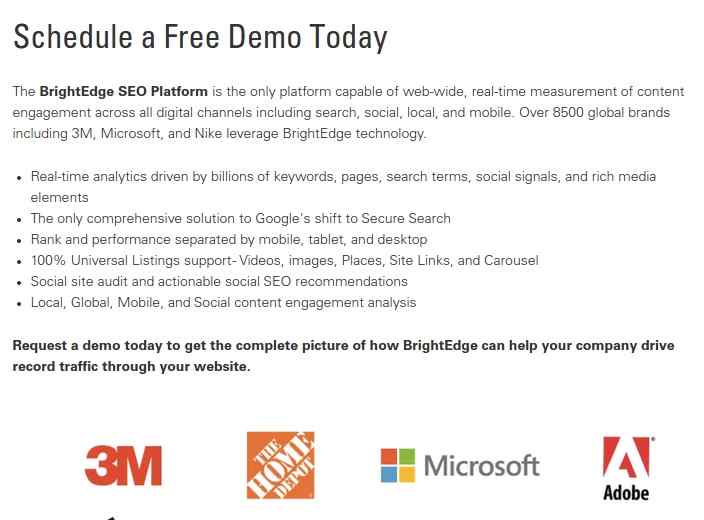29% of companies report that they do not do site and page testing and we suspect the number is even higher. Landing pages are where content meets psychology. These pages are optimized to entice customers not only to read the content but to click on the offer, fill out the form, and convert into leads. While these pages might look simple to the viewer, a well-optimized landing page has actually been carefully constructed and tested to capture the attention of the customer.  The landing page is your opportunity to convince customers that your initial offer is worthwhile and get them to become a lead, connect to your brand, and do business with you.
The landing page is your opportunity to convince customers that your initial offer is worthwhile and get them to become a lead, connect to your brand, and do business with you.
Optimizing the Design
The key to a successful landing page is simplicity. A 2012 study co-published by Google found that website visitors are far more likely to favor websites that are less visual complex and have more predictable layouts. When customers become overwhelmed by excessive information, images, and other content on the page, they will become more likely to bounce off the page without converting. A high-quality landing page will follow these guidelines:
- The desired customer action is clear: the form and offer are both easy to find and understand.
- The layout is simple: there should be no excessive information or images that detract from the desired customer action. Use one to two images that help to communicate the nature of the offer but eliminate any distractions.
- One CTA: One landing page per CTA, too many confuse customers about what they are supposed to be doing and it decreases conversion rates.
- Use a simple form: The form should be as short as possible to minimize the ‘cost’ that the brain perceives. Asking for too much information --even ‘optional’ information-- decreases conversions.
- Build trust: assure visitors of secure servers, use customer testimonials, and display badges, logos, and awards that increase trust in your company. BrightEdge works to build trust by displaying the logos of companies they have worked with.
Pay Attention to Language
The language you use on the landing page should be consistent with the offers you used to bring the customer to the site. That means keywords that had been used to entice people to visit the site should be repeated on the landing page. They should be used in the URL, the headings, and in the content. This will help reassure site visitors that they have landed on the correct page. Technology like the BrightEdge Data Cube can help you identify meaningful keywords that will help the landing page speak to visitors and identify their needs and user intent. People also have an innate desire to avoid loss.
A study run in 2007 monitored how college students responded to two emails. One asked them to sign up early for an offer to receive a discount. Another warned them to avoid signing up late and receiving a penalty. Although the frequency the same in both emails, 93 percent responded to the warning to avoid a penalty, compared to only 67 percent that responded to the offer to receive a discount. This is a psychological phenomenon called loss aversion. People worry more about avoiding losing out on an opportunity than receiving a potential award. Language used on the landing page should reflect this insight. Remembering to keep the content on the landing page brief and to the point, use the opportunity to point out to your visitors what they would be missing by passing on your offer. Bullet points and short paragraphs can be wonderful for communicating this information.
Look at how BrightEdge has their content arranged on the landing page for their demo offer.  Language also can make a difference in the wording of buttons and sign-up forms on the page. People generally respond better to buttons that speak to them from their point of view, such as “Start My Free Download” vs. “Start Download” or “Start Your Free Download”.
Language also can make a difference in the wording of buttons and sign-up forms on the page. People generally respond better to buttons that speak to them from their point of view, such as “Start My Free Download” vs. “Start Download” or “Start Your Free Download”.
Landing Page Testing
When a landing page is visited by thousands of people per day, even increases by just a few percentage points can mean a dramatic increase in leads and revenue. A/B testing gives you the power to optimize your landing page to maximize your conversions. In a basic A/B test you will create two versions of your page.
For example, you might want to test two images on the page or the wording of your offer. A/B testing will allow you to run both pages simultaneously. The program will randomly show either site A or site B to your visitors in equal amounts. The site that gains the highest percentage of conversions will be the winner. You will then make this site your standard landing page. A/B tests can also be used to compare several pages at once in more complex tests. Landing pages can be used to test nearly everything about a landing page, from major differences, such as layout changes or bounce rate, to small details, such as the color of the conversion button.
Conversion optimization specialists have seen measurable differences in conversion rates from making very small changes, such as a red button or a green button. There are a variety of different A/B testing tools available. Google Analytics Experiments is an option. This platform lets you test up to ten versions of a single page and allows you to customize who participates in the test. VWO is another popular A/B testing tools that allows you to create separate versions of the website by inserting a small JavaScript code into the webpage. Adobe Target offers sophisticated multivariate testing options and BrightEdge has announced an integration with it call Landing Page Optimizer, which enables marketers to:
- Gain access to in-depth, real-time competitor landing page data
- Quickly create landing page tests based on your actual competitors’ content
Quality landing pages can make an enormous difference in conversion rates and the success of a digital marketing campaign. According to Econsultancy, companies who have improved their conversion rates have used 50 percent more tests on their websites to identify weaknesses and maximize the impact of landing pages. While landing pages might look simple, the thought and care that must go into the development is enormous. As you prepare to build landing pages, remember to put yourself in your customer’s shoes and then test repeatedly to refine the methods.
